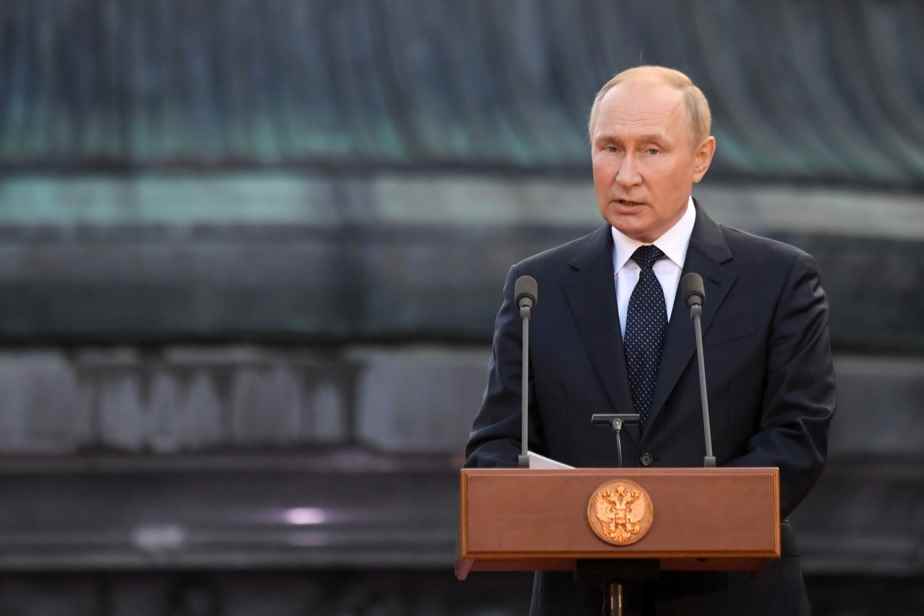Posted at 5:00 a.m.
Where are the nuclear arsenals in the world?
On June 13, the Stockholm International Peace Research Institute (SIPRI) published its annual book on the state of arsenals in the world. His conclusion: the number of nuclear warheads has fallen slightly, to 12,705 in 2022, from 13,080 in 2021. But “nuclear arsenals are expected to increase over the next decade”, it is believed. We note, for example, that China’s arsenal is “expanding” and that satellite images show “more than 300 new missile silos” under construction.

INFOGRAPHIC THE PRESS
Source: Reuters
Aren’t there international and bilateral (United States-Russia) treaties that make it possible to avoid a nuclear war?
“Treaties do not govern the use of nuclear weapons. This is a matter of the individual policies of each nuclear state,” recalls Jocelyn Coulon, researcher at the Center for International Studies and Research at the University of Montreal (CERIUM). “Treaties ban nuclear testing, establish nuclear exclusion zones, limit the number of missiles and warheads [partie du missile contenant la charge explosive]. »
And are these treaties respected?
Not always. Blurs and bypasses exist. “The fundamental pillar of control is the nuclear non-proliferation treaty (NPT) which is, broadly speaking, well respected,” continues Mr. Coulon. This treaty is signed by 191 States, which undertake not to develop such weapons. But there are also the five permanent member countries of the UN Security Council (United States, Russia, China, United Kingdom and France), which possess approximately 95% of the arsenals. “These powers have made a [marché] with the others, notes Mr. Coulon, saying if you renounce nuclear weapons, we undertake to reduce them and perhaps abolish them. Forty years ago, there were around 60,000 nuclear weapons in the world, while there are some 12,000 today. But where the spirit is violated is that the five great powers are engaged in a race to modernize nuclear weapons. »

INFOGRAPHIC THE PRESS
Source: Reuters
Modernization in what sense?
In the sense that old warheads are replaced by new ones. “We have moved, both in the Americans and in the Russians, from missiles with a single warhead to missiles with multiple warheads,” said Mr. Coulon. In the process, the other nuclear powers want this type of missile. Because if you have more than one warhead, you have the ability to hit more targets. We are also looking to develop warheads that are more resistant and capable of hitting deeper. So this race to make weapons more efficient has become qualitative and no longer quantitative. »
Are there other treaties?
Yes. A 1963 treaty prohibits nuclear weapons testing in the atmosphere, outer space and under water which is respected. Russia and the United States have also signed several treaties on strategic (long-range) offensive missiles. The most recent, New START, has been extended until February 4, 2026.
What about the famous Intermediate-Range Nuclear Forces (INF) Treaty?
In December 1987, Ronald Reagan and Mikhail Gorbachev signed the INF treaty in Washington (INF Treaty, in English) aimed at eliminating all cruise or ballistic missiles with a range of 500 to 5500 km, particularly in Europe (Euromissiles). But everything changed in 2019. According to NATO, Russia stopped respecting the treaty by developing the so-called SSC-8/9M729 systems. After unsuccessful discussions, the United States withdrew from the treaty on August 2, 2019.
How is nuclear diplomacy doing?
Contradictory at best, according to the SIPRI report, despite some positive points such as the extension of New START. Thus, on January 3, 2022, the five permanent members of the Security Council signed a joint declaration solemnly affirming that “nuclear war cannot be won and must never be fought”, words echoed by US President Joe Biden on Wednesday at the General Assembly of the United Nations. Despite this, the desire to “increase the place given to nuclear weapons” in the strategy of the great powers continues, observes SIPRI. And that’s not counting what small powers like North Korea will do. Recently, the latter passed a law authorizing “preventive nuclear strikes”, something never seen before.
Learn more
-
- 9
- Number of countries that possess nuclear weapons: United States, Russia, China, United Kingdom, France, Pakistan, India, Israel and North Korea
Source: Stockholm International Peace Research Institute

